The objective of any type of training is to improve the skills and capabilities of the individuals to be trained. In business, organisations need to sell their products, services, or solutions to prospective customers to be successful.
“Nothing Happens Until A Sales Is Made” - Jarrod Best-Mitchell
Jarrod Best-Mitchell always says "Nothing Happens Until a Sale Is Made" hence, the reason why organisations invest millions of dollars in it globally each year.
In this article, we take a look at what exactly is sales training, the different types, approaches, methodologies, etc. also, we discuss what makes an effective sales training program and how should companies measure it to gain the best results.
-
What is Sales Training?
-
Why is it important?
-
What is Covered In Sales Training?
- How Should My Company Approach Sales Training?
-
Different Types of Sales Training?
-
How Is It Delivered?
-
How Much Does Sales Training Cost in the Caribbean?
- What Happens After I Train My Team?
- Sales Training Metrics
- Is Sales Training Worth It?
What Is Sales Training?
Sales training is the delivery of a specific program designed to improve an organisation's sales force selling skills, business acumen, knowledge, etc. to increase sales and retain customers.
Why is it important?
There are two ways we can look at why sales training is important.
- Sales are directly tied to the revenue, success, and growth of an organisation.
- Sales training gives sales professionals the best opportunity to increase their skills and close more sales.
Here are some other reasons as to why sales training is important.
- Changes In your market
- Changes in product or service
- Low or No Growth over some time
- Customer Churn
- To improve on a specific area in the sales process
What is Covered in Sales Training?
The content covered in a sales training engagement varies with the needs of the organisation. A sales training exercise should always be closely aligned to the goals, plans, challenges, and timeline of the organisation.
A training engagement can cover some very general topics or can be focused on a specialised approach or stage of the organisation sales process.
Some topics covered in a general sales engagement are but are not limited to the following:
-
Prospecting
-
Needs Identification
-
Closing Techniques
Some specialised or customised sales training are but not limited to the following:
-
Account-Based Sales
-
Buyer Focused Selling
-
Consultative Selling
-
Solution Selling
-
GAP Selling
-
SPIN Selling
-
SNAP Selling
-
Social Selling
-
Sandler Sales Model
-
The Challenger Sale
-
Value Proposition Training
How Should My Company Approach Sales Training?
The approach to sales training has a big relationship to the outcome or success of a sales training program. The need for sales training should initially come from gaps identified by the sales manager and should be passed along to his/her leader, their training and development lead, or the human resource department.
Here is a five-step framework outlined by Demand Metric that sales we recommend sales managers and team leaders follow;
-
Step 1: Training Needs Assessment (Sales Skills + Sales Maturity)
-
Step 2: Market Position (Competitive Analysis + Client Profiling)
-
Step 3: Sales Process Training (The Sales & Buyer Process + Lead Qualification)
-
Step 4: Consultative Selling (Needs Identification, Value Proposition, Proposal Development, Objection Handling, etc.
-
Step 5: Key Account Planning: (Analyzing accounts, Territory Management, Strategic Approach)
-
Step 6: Sales Metrics (Setting Key Metrics, Reporting Tools, etc.)
Watch: What's The Deal Series: Episode #4 - Sales Training
How is it delivered?
Traditionally sales training was always delivered in person over a two, three, or four day period. However, over time and with the advent of technology sales training can now be delivered via online courses and also broken up over days and weeks.
Some organisations may not have the ability to pull their sales professionals off for two-four full days so breaking the training up over several days may be best. Other organisations may have large teams spread throughout the country or region. In instances like these, the training would be spread over some weeks where the reps are rostered accordingly.
It's important to note that the delivery of the training is dependent on the needs. For example, if the organisation is rolling out a new product or service. It would be best to have this delivered in person rather than virtually as there may be components in the sales process where a sales professional may be required to physically demonstrate the item to the client and identify their needs in the engagement.
How much does Sales Training cost?
Traditionally sales training has been looked at as a sizeable investment, however, over time and with the different delivery mechanisms the cost of training varies.
Different variables can factor into sales training costs such as:
-
Type of Training - General or Specialised
-
Location:
-
Local (Accommodation, meals, etc.)
-
Overseas (Airfare, accommodation, meals, per diem, Mics)
-
Online
-
On-Premise
-
In-person
-
Number of participants
-
Number of days
-
Trainer Costs
In the Caribbean, a sales engagement can start anywhere from USD220 to USD445 per
sales executive for in-person direct engagement.
While we have not seen many online sales courses in the Caribbean, an online course can start from anywhere around USD50 per sales representative and vary based on the program.
What happens after You Train Your Team?
To answer this question let's look at what should happen before you start training the team.
In the initial stages when sitting with your approved sales trainer, specific goals and KPI should be set with the sales managers and leaders to make sure that the right expectations are set with the team before.
Meaning, the team should understand why the organisation is investing in this training exercise, what will be covered, what skills will be gained, enhanced, or improved, what is expected of them, how it will be measured, and how success will be rewarded.
After the training, the sales managers should work with the sales trainer for a period of thirty to sixty days to measure the rate of adoption of the techniques and if there are any other gaps identified.
Post Sales Training Metrics
Here are some metrics to look at post-sales training:
-
Lead Acquisition Volume
-
Lead to Customer Conversion Rate
-
Quota Attainment
-
Time to Close
-
Increase In Average Deal Size
-
Methodology Adoption rate
-
Average Meetings or Demos
-
New Rep Ramp-Up Time (Sales Onboarding)
-
Average Sales Cycle
So, Is Sales Training Worth It?
As we said earlier, "Nothing Happens Unless A Sale is Made"! Whether you are a small or large sales enterprise, revenue is the lifeblood of an organisation's growth.
Products, competitor strategies, buyer preferences, etc. are changing daily. Organisations cannot afford to have an ill-trained salesforce because their business will slowly or rapidly decline. Sales training courses are the best and once approached correctly can be the most cost-effective way to improve your business growth.




COMMENTS